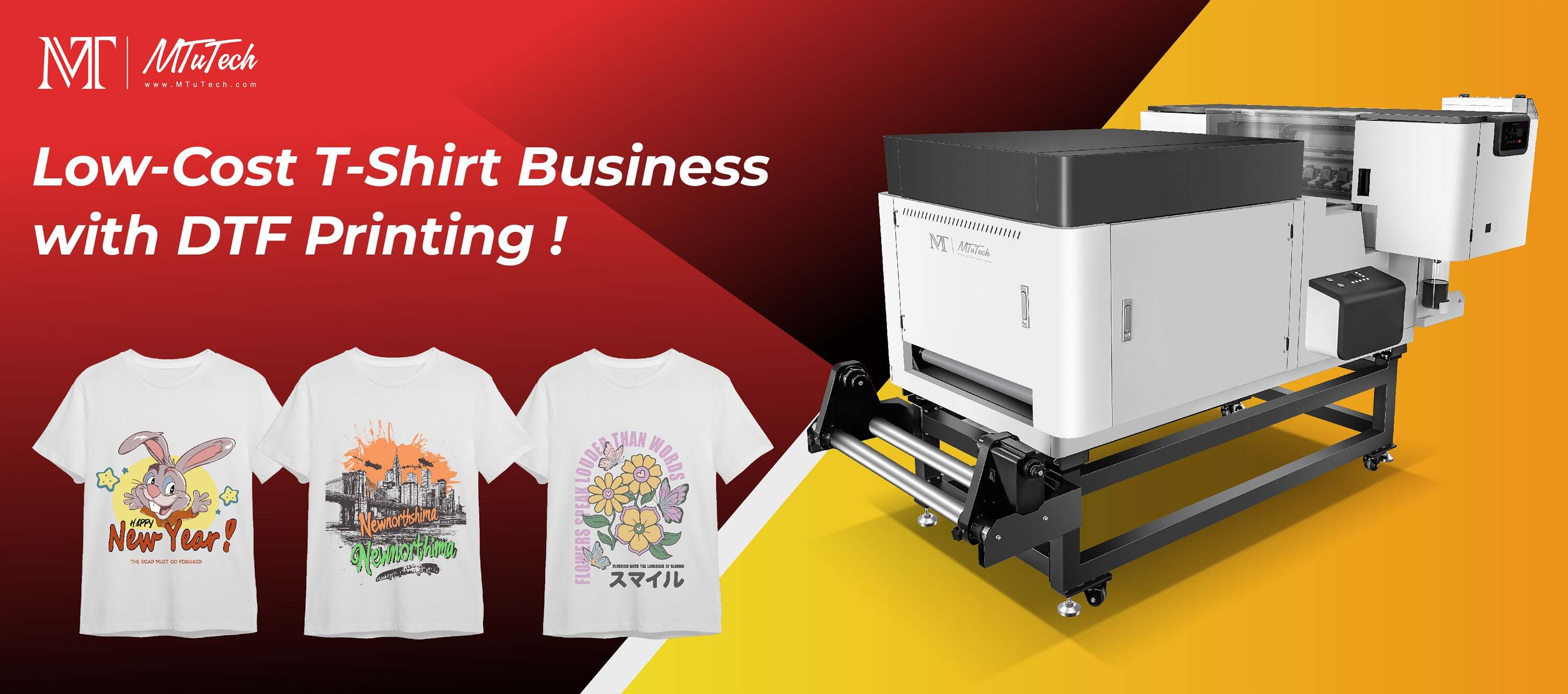Introduction
In an age where environmental consciousness is at its peak, the printing industry faces significant scrutiny over its environmental impact. Traditional printing methods often lead to excessive waste, harmful emissions, and a reliance on non-sustainable materials. However, advancements in technology have introduced new solutions, notably Direct to Film (DTF) printing. This innovative technique is revolutionizing the print industry by reducing waste and promoting eco-friendly practices. In this blog post, we will explore how DTF printers contribute to sustainable printing and the numerous benefits they offer.
Understanding DTF Printing
Direct to Film printing is a method where designs are printed onto a special film, which is then transferred onto various surfaces, predominantly textiles. Unlike traditional methods that require screens or extensive setups, DTF printers streamline the entire process, making it not only efficient but environmentally friendly.
How DTF Printing Works
The DTF printing process consists of several key steps:
Design Creation: Artwork is created digitally using graphic design software.
Printing: The design is printed onto a special film using eco-solvent inks.
Powder Application: A water-soluble adhesive is applied to the printed film.
Curing: The printed film is cured using a heat source to set the ink.
Transfer: The film is then placed onto the desired surface and heat pressed to transfer the design.
Benefits of DTF Printing
Understanding the key benefits of DTF printing can help businesses and consumers make informed decisions about their printing methods. Here are several ways DTF printers reduce waste and promote eco-friendly practices:
1. Reduced Material Waste
DTF printing minimizes material waste considerably compared to traditional screen printing. Traditional methods often require extensive setup, including screens, inks, and a variety of chemicals that can result in significant waste. DTF printing streamlines this process by printing designs directly onto the film, allowing for:
On-demand printing, reducing overproduction.
Utilization of leftover materials in new designs.
2. Eco-Friendly Inks
DTF printers utilize water-based, eco-solvent inks that are less harmful to the environment. Unlike conventional inks that may contain volatile organic compounds (VOCs) and other toxic materials, eco-solvent inks provide vibrant colors while being:
Biodegradable.
Less polluting during use and disposal.
This factor alone significantly lowers the ecological footprint of printing operations.
3. Energy Efficiency
DTF printers are designed with energy efficiency in mind. They require less electricity to operate and often have faster printing speeds. This means they consume less power during production, making them an environmentally responsible choice for businesses looking to reduce their energy consumption.
4. Versatile Applications
One of the standout features of DTF printing is its versatility. It can be used on various materials, including cotton, polyester, and blends. This versatility ensures that manufacturers, artists, and businesses can print directly onto the materials they need without the need for multiple processes, reducing waste in auxiliary materials.
5. Lower Water Consumption
Traditional printing processes often require substantial water for rinsing screens and cleaning. DTF printing significantly lowers water usage by eliminating the need for screens and reducing cleanup processes. This focus on water conservation aligns well with global efforts to conserve this precious resource.
Features of DTF Printers
DTF printers come equipped with features that make them both user-friendly and efficient, contributing to waste reduction and overall eco-friendliness. Below are some notable features:
1. Integrated Curing System
Many DTF printers come with an integrated curing system that ensures the inks properly adhere to the film, preventing waste caused by ink smudging or misprints.
2. High-Quality Output
DTF printers produce high-resolution prints with vibrant colors and fine details. This quality ensures fewer rejected prints due to subpar performance, thereby minimizing waste and improving productivity.
3. User-Friendly Interface
Modern DTF printers feature intuitive interfaces that simplify the printing process. This usability reduces the likelihood of operational errors that can lead to wasted materials.
4. Compact Design
DTF printers are often more compact than traditional printing setups, making them suitable for small businesses or home studios. This space-saving design encourages more businesses to adopt eco-friendly practices without requiring significant upfront investment.
Conclusion
As the world becomes increasingly aware of the importance of sustainable practices, the printing industry must adapt to meet these demands. DTF printing technology offers a powerful solution that not only reduces waste but also promotes eco-friendly practices throughout the printing process. From lower material waste to energy efficiency and the use of eco-friendly inks, DTF printers represent a promising future for environmentally conscious printing. To further explore this innovative technology, explore our high-quality DTF printers here and join the movement towards more sustainable printing practices.
FAQ
What is the main advantage of DTF printing over traditional printing methods?
The main advantage of DTF printing is its ability to reduce waste by using on-demand printing, eco-friendly inks, and a streamlined process that eliminates the need for extensive setups.
Are DTF printers suitable for small businesses?
Yes, DTF printers are compact and user-friendly, making them an excellent choice for small businesses or home-based operations looking to implement eco-friendly printing practices.
What types of materials can DTF printing be applied to?
DTF printing can be applied to a variety of materials, including cotton, polyester, and blends. This versatility makes it suitable for various applications, from apparel to promotional items.
How does DTF printing contribute to water conservation?
DTF printing minimizes water consumption by eliminating the need for screen rinsing and extensive cleanup processes, which are common in traditional printing methods.
Are the inks used in DTF printing safe for the environment?
Yes, DTF printers utilize water-based, eco-solvent inks that are biodegradable and contain fewer harmful chemicals compared to traditional solvent-based inks.

